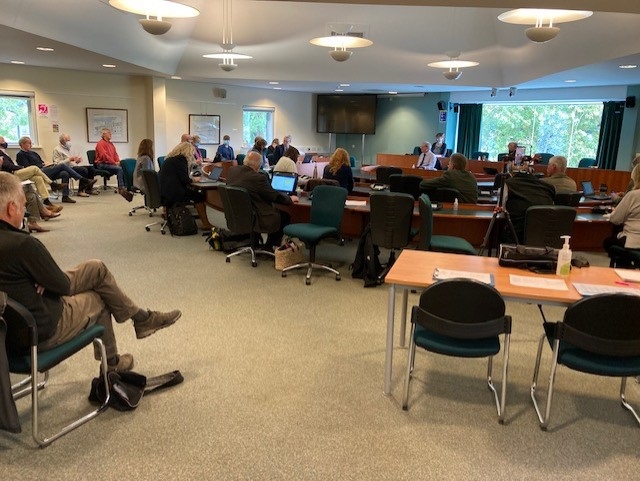I held two Cotswolds flooding meetings on Friday 22 October, a Cirencester meeting was held in the morning, the 2nd meeting was held in the afternoon in Moreton-in-Marsh.

There couldn’t have been a bigger contrast between the two meetings. The Cirencester meeting was disappointing, where apart from Thames Water who have lined a remarkable length of sewage pipes, there has been an unacceptable amount of progress since the Cirencester floods last December.
Even simple things like the memorandum between the Town Council and the Environmental Agency has still not been finalised in writing. This is important so that all Cirencester residents can be reassured that policy on the sluice gate will be followed.
Now that the larger bunding scheme for flood alleviation for Cirencester has been abandoned because it is too expensive, all the agencies are relying on natural small-scale bunding continuation schemes which will slow down the water from the Daglingworth Stream and the Churn river, preventing a wave of water flooding Cirencester.
This means if the same, unfortunate weather conditions do re-occur again Cirencester will be as vulnerable to flooding as it was before. This is completely unacceptable, and I urge all the stakeholders from the Environment Agency, Thames Water, and the lead flood coordinators from the Town and District Councils to work really constructively together so that the town is not stuck in the same position this time next year.
In terms of the meeting in Moreton-in-Marsh, the major scheme installed three years ago promoted by these flood meetings very considerably reduced the amount of flooding in Moreton last December. The emphasis now is on natural flood continuation to protect the East side of the town.
The news on Bledington village which suffered the worst flooding in the Cotswolds was even more positive, the agreed temporary extension to the funding scheme will be installed in the month which should provide good relief to the village if heavy rainfall does re-occur.
Longer-term solutions have been investigated in detail and funding from the Environment Agency is actively being discussed. The need for more action in Siddington was also examined, as was the pumping station plans in South Cerney which have now been now changed for a gravity-fed solution.
The full minutes of both meetings will be made available soon.
